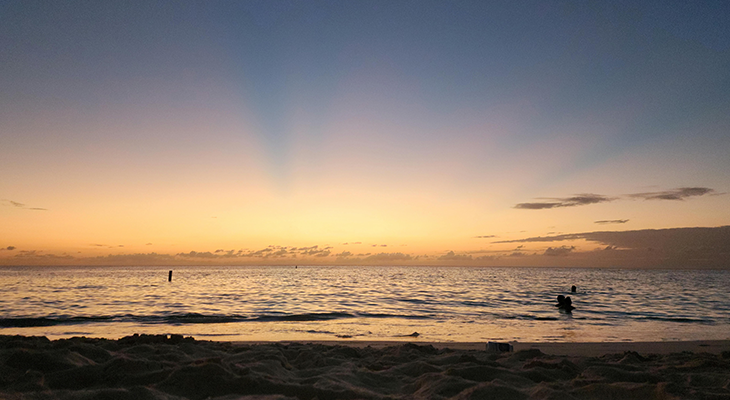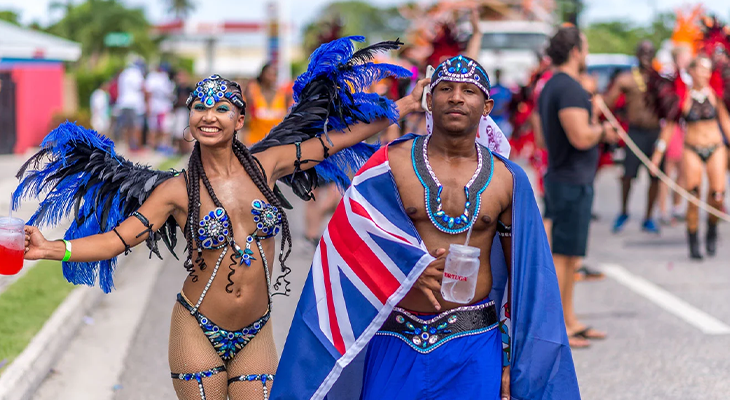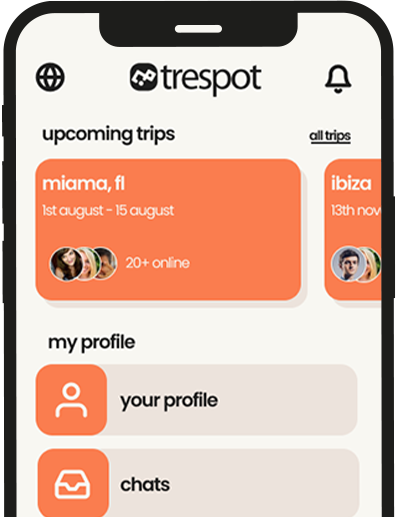Introduction: How to Pick the Best Time to Visit Cayman Islands
Choosing the best time to visit Cayman Islands depends on your travel style: are you chasing endless sun, epic festivals, perfect dive conditions, or just the best value for your money? The Caymans offer warm weather year-round, but there are major differences between the dry winter (December–April), the lively festival shoulder seasons (March–June, November), and the quiet, stormier summer-fall. In this definitive guide, you’ll get everything you need—weather, prices, festivals, diving visibility, family and group tips, cruise hacks, and more—so your Grand Cayman, Brac, or Little Cayman trip is exactly what you want. Whether you’re a solo traveler, meetup group, or first-time visitor, let’s make your Cayman Islands experience perfectly timed.
Snapshot: The Short Answer for Busy Travelers
- Best overall (weather + value): March–June & November
- Best weather: December–April (dry, sunny, low humidity)
- Cheapest: August–October (watch for storms, flexible plans recommended)
- Hurricane season: June 1–Nov 30 (peak activity: August–October)
- Festival highlights: Cayman Cookout (Jan), Batabano Carnival (May), Pirates Week (Nov)

Cayman Weather 101: Dry, Wet & Hurricane Season
Temperatures & Rainfall by Month
The Caymans enjoy steady warmth: 28–30°C (82–86°F) most of the year. The dry season (Dec–Apr) brings low rain, breezy trade winds, and low humidity. The wet season (May–Nov) is hotter, more humid, with quick tropical downpours—October is usually the wettest month.
Trade Winds & Sea Conditions
Northeasterly winter trades make leeward beaches flat and great for swimming, diving, and sailing. Summer can be even calmer but humid. Hurricane risk is real June–Nov—keep travel plans flexible and insured.
What “Wet Season” Really Means
Even in wet months, rain often comes in short, heavy bursts (not all-day washouts). Morning boat trips and beach time are usually safest bets!
High Season (Dec–Apr): Sunny Skies & Peak Prices
High season brings the most reliable sun and sea, perfect for first-time visitors, families, and honeymooners. Expect premium prices, busy Seven Mile Beach, and more cruise ship crowds. For a quieter vibe, hit the East End or North Side, and check the cruise port schedule to dodge busy days. Don’t miss Cayman Cookout in January for world-class food and celeb chefs.
Sample 3-Day Plan for High Season
- Day 1: Early-morning Stingray City tour, beach picnic, Camana Bay sunset
- Day 2: Smith Cove swim, Cayman Cookout event (January), Rum Point dinner
- Day 3: West Bay snorkel, National Gallery, North Side road trip
Shoulder Season (Mar–Jun & Nov): Value Windows
March–June is the secret sauce for many travelers: dry or nearly-dry weather, lower prices, and lighter crowds as snowbirds go home. May is a local favorite—warmer seas, mango season, Batabano Carnival. November means dry skies return and Pirates Week energizes the islands before the winter rush. Book flights and hotels early for best rates!
Shoulder Season Money-Saving Tips
- Fly midweek (Tue–Thu) and stay 5–8 nights for best value
- Compare condos/villas to hotels—rates can be 30% less
- Book tours outside of cruise ship docking days for emptier beaches and discounts
Low Season (Jul–Oct): Hot Deals, Storm Risk
Summer and early fall bring the lowest prices but also the most rain and highest hurricane risk—August to October is peak storm season. You’ll find empty beaches, warm seas, and easy reservations, but be flexible: book refundable stays, monitor NOAA hurricane updates, and plan morning activities when weather is calmest. If a storm does approach, resorts and airlines are used to rebooking fast.
Insurance & Flexibility Playbook
- Buy “hurricane covered” travel insurance
- Have indoor/rainy day activities planned (museums, caves, distilleries, galleries)
- Keep backup dates in case of rebooking
Diving & Snorkeling by Season
Cayman Islands is a world-class dive destination all year: water temps are 26–28°C (78–82°F), and visibility is often 18–30m (60–100ft). November–April usually has the best clarity for photographers and beginners. May–October brings warmer water, fewer divers, and easy conditions, but viz can dip after heavy rains. For a rare treat, plan for Nassau grouper spawning in Little Cayman (Jan–Feb full moons). Stingray City sandbar is magical in every season—just time your tour to avoid cruise ship crowds.
Festivals & Events Calendar
- Cayman Cookout (January): Foodie festival with celebrity chefs, tastings, and beach events on Seven Mile Beach.
- Batabano Carnival (May): Colorful costumes, street parades, steel drum music, and family fun—usually early May.
- Pirates Week (November): Historical reenactments, music, fireworks, and celebrations across all three islands—Grand Cayman: Nov 8–15, 2025.

Month-by-Month: What to Expect
- Jan–Feb: Dry, mild, premium prices, Cayman Cookout in Jan
- March: Driest month, ideal for families, book early for spring break
- April: Warming up, start of shoulder season, better deals
- May: Locals’ favorite—warm, Batabano Carnival, start of hurricane season late in month
- June: Hotter, humid, low season starts, good value
- Jul–Aug: Steamy, best rates, plan around quick showers
- Sept–Oct: Wettest, cheapest, but highest storm risk—keep plans flexible
- Nov: Rain eases, dry season begins, Pirates Week energizes the islands
- Dec: Classic “Caribbean winter,” high demand, holiday pricing
Best Time for Specific Travelers
- Families: March–April or November for great weather and fewer crowds
- Divers: November–April for top visibility, May–October for warm water
- Couples/Honeymooners: May–June for sunsets, warm water, and deals
- Travel Communities/Meetups: May and November for lower rates, mix of events, and less crowding
Islands at a Glance: Grand Cayman vs Cayman Brac vs Little Cayman
- Grand Cayman: Main airport, largest selection of hotels, tours, dining. Weather follows national patterns.
- Cayman Brac: Quieter, dramatic cliffs, top wreck and wall dives, slower pace.
- Little Cayman: World-famous Bloody Bay Wall, Nassau grouper spawning in winter, tiny-island tranquility even in high season.
Price & Crowd Savvy: How to Save Without Sacrificing Sun
- Go shoulder season: late April–June or November
- Fly midweek, stay 5–8 nights for best rates
- Book tours on light cruise days for emptier beaches
- Compare condo/villa rates—often 30% less than hotels
Cruise Considerations
Winter is prime cruise season (Dec–Apr), with some days seeing 4–6 ships docked. Expect crowds at beaches and Stingray City on these days. Use the official port schedule to plan quieter shore excursions and beach time.
Rough winter seas can occasionally disrupt tenders—always have a backup plan for shore days.
Responsible Travel & Safety by Season
- During hurricane season, follow NOAA/NHC updates and have flexible, insured bookings
- Use reef-safe sunscreen, never touch marine life, and follow local conservation guidelines—especially at Stingray City and during Nassau grouper spawning
Quick Takeaways
- Dry season (Dec–Apr) is best for sun and calm seas—book early!
- March–June and November balance great weather, prices, and lighter crowds
- August–October = lowest rates, but be ready for storms
- Divers love Nov–Apr for clarity, May–Oct for warm water
- Check cruise port schedule for quiet beaches and Stingray City tours
- Plan your trip to overlap with Cayman Cookout, Batabano, or Pirates Week for local culture
Conclusion
The best time to visit Cayman Islands is what suits your style: winter sun and festivities, spring value, summer solitude, or fall events. Smart travelers use shoulder season for savings, always keep an eye on weather forecasts, and pair their dates with festivals or prime diving days. With this guide, your Cayman adventure will be perfectly timed, stress-free, and full of local flavor. Ready to plan? Tell us your top priorities—beach, diving, festivals, value—and we’ll help you build the ultimate Cayman Islands itinerary.
What’s your favorite time to visit or secret Cayman tip? Share it below and help other travelers plan smarter!
FAQs – Best Time to Visit Cayman Islands
March is typically the driest, sunniest month with pleasant humidity and perfect beach conditions.
August–October offers the lowest rates but comes with the highest chance of rain and storms. Book flexible and insured.
Not always! June–Nov is hurricane season (Aug–Oct peaks). If you go, buy hurricane insurance, book refundable rates, and watch weather alerts.
It’s always good! November–April has the best visibility; May–October is warmest and less crowded.
January for Cayman Cookout, May for Batabano Carnival, and November for Pirates Week.
References
- U.S. News Travel — Best Times to Visit Cayman Islands
- Celebrity Cruises — Best Time to Visit Cayman Islands
- WeatherSpark — Grand Cayman Weather by Month
- Visit Cayman Islands (Official) — Weather
- NOAA/NHC — Atlantic Hurricane Center
- Cayman Islands — Festival/Event Calendar
- Red Sail Sports — Best Months to Visit & Dive
- REEF — Nassau Grouper Spawning in Little Cayman
All weather data and seasonal advice based on a synthesis of travel authority guides, official Cayman Islands resources, and recent traveler reviews.



